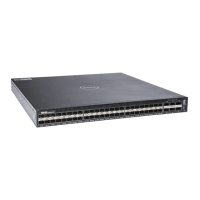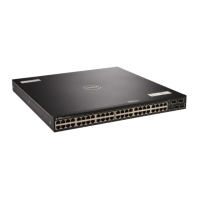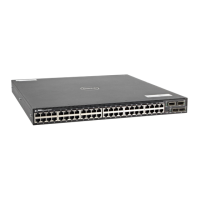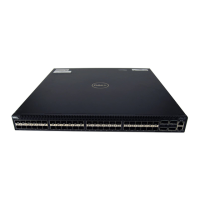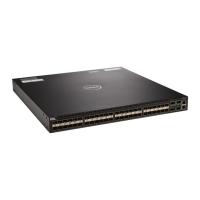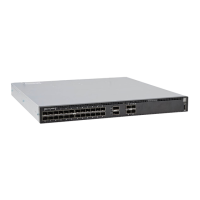Concept Explanation
• Dead Interval — The interval when data traffic is blocked on a port. The default is
three times the Hello interval rate. The dead interval is configurable in 50 ms
increments from 50 ms to 6000 ms.
Ring Status The state of the FRRP ring. During initialization/configuration, the default ring status is
Ring-down (disabled). The Primary and Secondary interfaces, control VLAN, and Master
and Transit node information must be configured for the ring to be up.
• Ring-Up — Ring is up and operational.
• Ring-Down — Ring is broken or not set up.
Ring Health-Check
Frame (RHF)
The Master node generates two types of RHFs. RHFs never loop the ring because they
terminate at the Master node’s secondary port.
• Hello RHF (HRHF) — These frames are processed only on the Master node’s
Secondary port. The Transit nodes pass the HRHF through without processing it.
An HRHF is sent at every Hello interval.
• Topology Change RHF (TCRHF) — These frames contains ring status, keepalive,
and the control and member VLAN hash. The TCRHF is processed at each node of
the ring. TCRHFs are sent out the Master Node’s Primary and Secondary interface
when the ring is declared in a Failed state with the same sequence number, on
any topology change to ensure that all Transit nodes receive it. There is no
periodic transmission of TCRHFs. The TCRHFs are sent on triggered events of ring
failure or ring restoration only.
Implementing FRRP
• FRRP is media and speed independent.
• FRRP is a Dell proprietary protocol that does not interoperate with any other vendor.
• You must disable the spanning tree protocol (STP) on both the Primary and Secondary interfaces before
you can enable FRRP.
• All ring ports must be Layer 2 ports. This is required for both Master and Transit nodes.
• A VLAN configured as a control VLAN for a ring cannot be configured as a control or member VLAN for
any other ring.
• The control VLAN is not used to carry any data traffic; it carries only RHFs.
• The control VLAN cannot have members that are not ring ports.
• If multiple rings share one or more member VLANs, they cannot share any links between them.
• Member VLANs across multiple rings are not supported in Master nodes.
• Each ring has only one Master node; all others are transit nodes.
Force10 Resilient Ring Protocol (FRRP) 404
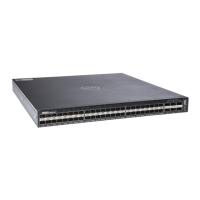
